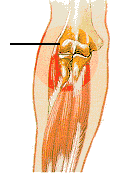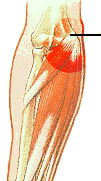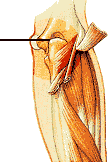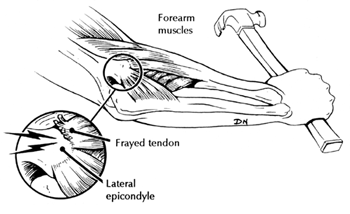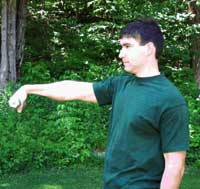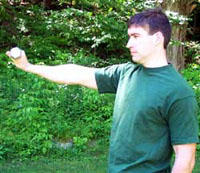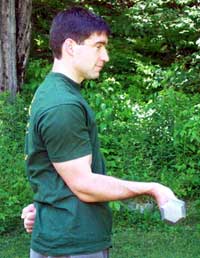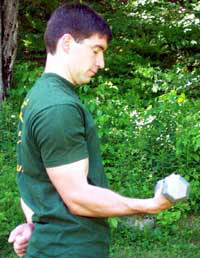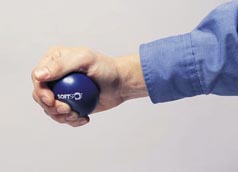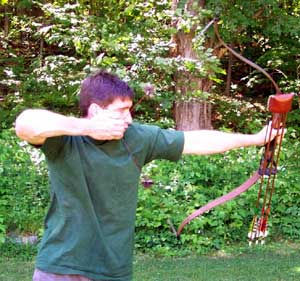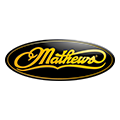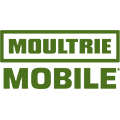Bowsite.com
The Nation's Leading Bowhunting Website
In this Bowsite’s ER Feature we will discuss elbow pain. Judging by the questions I receive from all of you, elbow pain is a frequent problem for archers. In my experience it is only slightly less common than shoulder pain. The elbow is a hinge type joint and is one of the most stable joints
Both of your elbows are subject to a lot of stress as you bring your bow to full draw. Your bow arm is held in extension and your lateral (outside) elbow muscles are doing most of the work. As you pull the string back your bowstring elbow is flexing and your medial (inside) elbow muscles are doing more of the work. In my experience, most archers have problems with elbow pain on the outside of their bow arm. The medical term for this is lateral epicondylitis. It is also known as tennis elbow. This is because the lateral muscle complex is not nearly as strong as the medial muscles. Also, with the elbow extended there is less bony support of the joint, and these muscles need to provide a greater amount of the stability. Finally, hand shock from the bow is transmitted into the elbow and can be a factor in elbow pain.
Usually archers will complain of pain on the outside of their elbow after shooting. The pain will be most severe over the bump on the outside of your elbow. The pain will be worse when you straighten your arm and stress the lateral muscles. What is happening is that there is inflammation and micro tears in the area where the muscles attach to the outside of the humerus bone. Repetitive shooting worsens the trauma to the area and increases the damage. Treatment of lateral elbow pain consists of allowing the damage to heal and then preventing recurrences. First you must allow the inflammation and micro tears to heal. This typically involves taking a break from shooting and taking an anti-inflammatory medication such as ibuprofen. When your elbow is no longer hurting you can gradually resume shooting. Dropping your draw weight and using a bow with less hand shock will give your elbow a break. A very slight bend in your elbow will also take some of the stress off of your lateral muscles. Some people have great luck with a tennis elbow band. It stabilizes the lateral muscles and helps prevent bow shock transmission into the elbow. It doesn’t work for everyone but may be worth a try. You can buy one in most sporting goods stores. Good luck finding one in camo! The other thing that you can do to prevent recurrences is to strengthen the muscles surrounding your elbow. Simple exercises can make the muscles stronger and withstand greater stress. 5 minutes a day a couple times a week will go a long way towards keeping you shooting pain free. Medial elbow pain is slightly less common for archers. The medial muscles are stronger and your elbow is more stable in the flexed position. Still the repetitive trauma of shooting can cause inflammation and pain on the inside of the elbow. The pain will usually be located over the big bump (medial epicondyle) on the inside of your elbow. Rehabilitation starts the same. Rest and ibuprofen until pain free. The next step is to have someone watch, or better yet, video your shooting mechanics. As we mentioned medial pain is more common in the drawing arm. Drawing your bow with a very high elbow could cause pain. You should strive for an inline draw and make sure you are doing most of the work with your back. Some simple exercises will strengthen these muscles and help prevent recurrences. Our exercises will be geared toward strengthening the muscles that surround the elbow. First we will focus on the forearm. Remember that when starting this program you will need to start with a very light weight (1 pound) and gradually work up to about 10 pounds. If the pain begins to recur, stop for a week and then drop down a couple pounds and start again.
These 4 exercises should take about 10-15 minutes at the most and should be done 2 or 3 times a week. If done regularly they will make your forearm much stronger and help stabilize your elbow. Hopefully this program will keep you shooting pain free for a many years.
|
|||||||||||||||||||||


